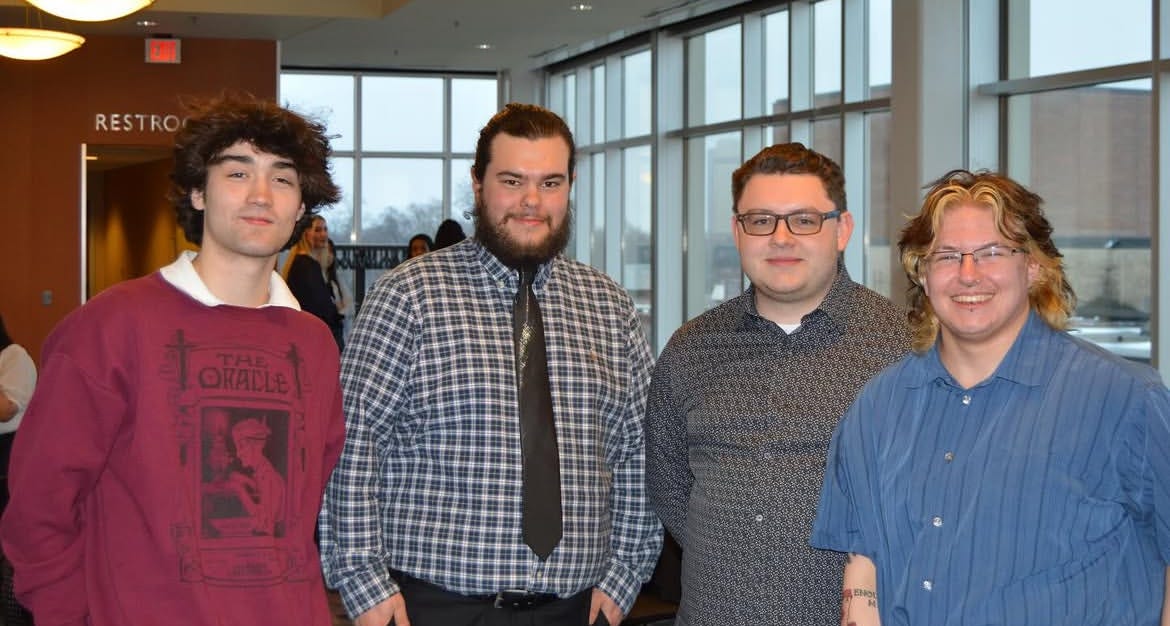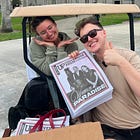Without a J-school, student journalists learn by doing — and teaching
How student newspapers in Maine and Minnesota are learning, teaching and leading all at once
If there’s one thing Ella Beiser wishes The Bates Student had, it’s a faculty advisor with professional journalism experience and the institutional memory to help the student newspaper navigate its challenges.
“I wasn’t expecting to have to do so much training,” said Beiser, the editor-in-chief of the student newspaper at Bates College in Maine. “It’s not something that comes naturally to me. That’s also been a learning curve.”
As she wraps up her tenure and prepares to hand over the reins, Beiser reflected on just how steep that learning curve can be, especially at colleges without journalism programs to support student media.
“You have to take a lot of initiatives,” she said.
For her and others, the absence of long-term guidance can make leadership transitions and staff training feel more like rebuilding from scratch.
There’s no journalism major at Bates — only two one-month courses taught by part-time instructors during the January term. Beiser, a double major in Hispanic studies and politics, joined the paper because of her high school journalism experience.
When she took over as editor, the 152-year-old newspaper didn’t even have a staff manual. She and her team built a workflow and drafted a guidebook from the ground up.
“Not having a journalism school, I think the biggest impact is that you have to train everyone who joins your staff, which is like a whole other job,” she said. “It could have been somebody’s job at the school, but instead, it’s just all editors kind of pitch in.”
That training often takes the form of student-led workshops covering everything from basic news values and pitch writing to editing mock articles pulled from past issues.

A similar dynamic plays out at Hamline University in Minnesota, where journalism instruction is limited to a handful of courses housed within the English and communication studies program.
Aiden Lewald, editor-in-chief of The Oracle, said he also relies heavily on staff initiative.
At The Oracle, training is led by Lewald, Managing Editor Isaac Roy and another editor. New writers learn journalistic principles such as ethics and AP style through workshops and a shadowing model, where first-timers follow experienced reporters on assignments.
“We’ve been really lucky this year to have a staff that has been able to latch on to these principles really quickly,” Lewald said, noting most students learn from doing the journalism process themselves, doing editing and getting comments from editors.
The paper occasionally brings in outside professionals for short training sessions. A school marketing photographer, for example, visits every few semesters to teach basic photography.
Asked what lessons are hardest to pass down, Lewald pointed to institutional knowledge — how to navigate source relationships, pushback from the university and community dynamics.
“The ability to manage a team is a bit difficult to just pass down to someone and figuring out how to train people on the structures that are in place at the Oracle,” Lewald said.
Roy added that even basic reporting tasks, like approaching sources and conducting interviews, can be intimidating for newer staffers. A big part of their job, he said, is helping students prepare, especially before speaking to high-level administrators.
Beiser echoed that, noting that editorial judgment, particularly in high-stakes stories, isn’t easy to teach.
“How do you navigate that and how do you communicate well with people and how do you determine when you have enough information that you're ready to publish?” Beiser said. “That’s hard.”
But perhaps the most fragile part of student journalism, Beiser added, is the network of relationships that each team builds — and leaves behind.
“A lot of our capacity right now comes from the fact that our editors have built out really strong relationships with our administration and student groups and the community,” she said. “These are individual relationships that will graduate out and have to be rebuilt.”

That’s one advantage The Oracle has: Its advisor, Trevor Maine, worked at the paper as a student in the early 2000s. He’s the newsroom’s go-to resource, Lewald said.
“He’s a lot of institutional knowledge, not only about the Oracle, but about general journalistic principles,” Lewald said. “There’s a really great foundation from all editors-in-chief and managing editors that came before us.”
Not having a formal journalism program behind them, Lewald said he felt “even more confident in our ability” because the staff is diverse
Not having a formal journalism program behind them doesn’t diminish their confidence, Lewald said. If anything, it strengthens it.
One reason is the diversity of academic backgrounds on staff.
The 44-person newsroom includes student-athletes, pre-law students, theater majors, anthropology majors, creative writing students and an advisor who teaches religion and English.
“I feel even more confident in our ability,” he said. “The history of our organization and where we come from and what we stand for really involves heavily with the diversity of our students and the unique experiences they bring.”
A traditional journalism school might offer structure, he added, but it could also be more isolating. That range of perspectives is what gives The Oracle its character, he said.
💬 I want to hear from you! What’s one thing you wish your student newsroom had when you first joined? Email me at nutgrafnews@gmail.com.
Story Spotlight:
✊ The Observer and PULSE Magazine, publications at Central Washington University, are set to walk out this week to protest a 98% funding cut. The protest comes as student journalists continued to receive support, with more than 400 people signing their petition.
👀 Watch: Temple University student journalists stepped up to help two high schools in California that were burned in the recent wildfires by printing newspapers for them.
📰 A student journalist in Iowa dug up archives of their 53-year-old newspaper, The Campus Chronicle, and realized, “It’s clear that some things have changed, but many student struggles remain the same 50 years later.”
💯 The first 100 days of the Trump administration have been marked by a flurry of executive actions that have created a chilling effect and have the potential to curtail media freedoms, according to a report from the Committee to Protect Journalists.
Featured Opportunities:
NYC high school students: Apply to City Limit’s CLARIFY, a paid internship in public service journalism.
KSAT 12 NEWS, San Antonio, is seeking a news producer trainee. It’s a one-year, full-time, paid position.
Nylon is looking for summer interns to cover music, fashion, beauty and nightlife.
Join the American Press Institute’s webinar on what journalists should know about burnout May 6.
The Chips Quinn Fellowship provides a one-year mentorship for early-career journalists. Apply before May 8.
The NABJ is awarding scholarships for five students and entry-level journalists to attend its conference in Cleveland. Apply before May 12.
The Mississippi Youth Media Project is hiring 15-17-year-old student journalists for its health coverage this summer. Applications close May 15.
The Association of LGBTQ+ Journalists is providing two scholarships for student journalists. Apply by May 20.
The American Society of Business Publication Editors offers free memberships to student journalists and invites you to attend its virtual conference, ASBPEvolve: The Biggest B2B Editorial Summit, for free May 28-30. Register before May 26.
Foundation for Individual Rights and Expression is hosting a Free Press Workshop in Philadelphia June 14.





